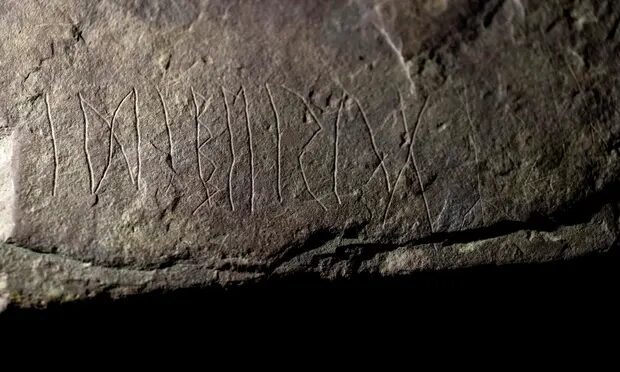
The flat, square block of brownish sandstone has carved scribbles, which may be the earliest example of words recorded in writing in Scandinavia, the Museum of Cultural History in Oslo said.
It said it was "among the oldest runic inscriptions ever found" and "the oldest datable runestone in the world".
"This find will give us a lot of knowledge about the use of runes in the early iron age. This may be one of the first attempts to use runes in Norway and Scandinavia on stone," said Kristel Zilmer, a professor at the University of Oslo, of which the museum is part.
Older runes have been found on other items, but not on stone. The earliest runic find is on a bone comb found in Denmark. Zilmer said that maybe the tip of a knife or a needle was used to carve the runes.
The runestone was discovered in late 2021 during an excavation of a grave near Tyrifjord, west of Oslo, in a region known for several monumental archaeological finds. Items in the cremation pit - burned bones and charcoal - indicate that the runes were likely inscribed between AD1 and AD250.
"We needed time to analyse and date the runestone," she said to explain why the finding was first announced on Tuesday.
Measuring 31cm by 32cm (12.2in by 12.6in), the stone has several types of inscriptions and not all make linguistic sense. Eight runes on the front of the stone read "idiberug" - which could be the name of a woman, a man or a family.
Zilmer called the discovery "the most sensational thing that I, as an academic, have had".
There is still a lot of research to be done on the rock, dubbed the Svingerud stone after the site where it was found.
"Without doubt, we will obtain valuable knowledge about the early history of runic writing," Zilmer said.
The runestone will be exhibited for a month, starting on 21 January, at the Museum of Cultural History, which has Norway's largest collection of historical artifacts, from the stone age to modern times.
Runes are the characters in several Germanic alphabets that were used in northern Europe from ancient times until the adoption of the Latin alphabet. They have been found on stones and different household objects.



Comment: See also:
- The Hand of Irulegi: 2,100 year-old artefact shows earliest evidence of Basque language ever found
- Recurring, natural climate change: 9th century Viking runestone records fears of '3-year-long winter'
- 900-year-old coded Viking message carved on wood fragment finally solved, it says "Kiss me"
- 13th century boy who preserved his homework on birch bark
- Minoan language Linear A Linked to Linear B in groundbreaking new research
And check out SOTT radio's: MindMatters: Meaning All the Way Down: The Wonders and Mysteries of Language with Juliana Barembuem